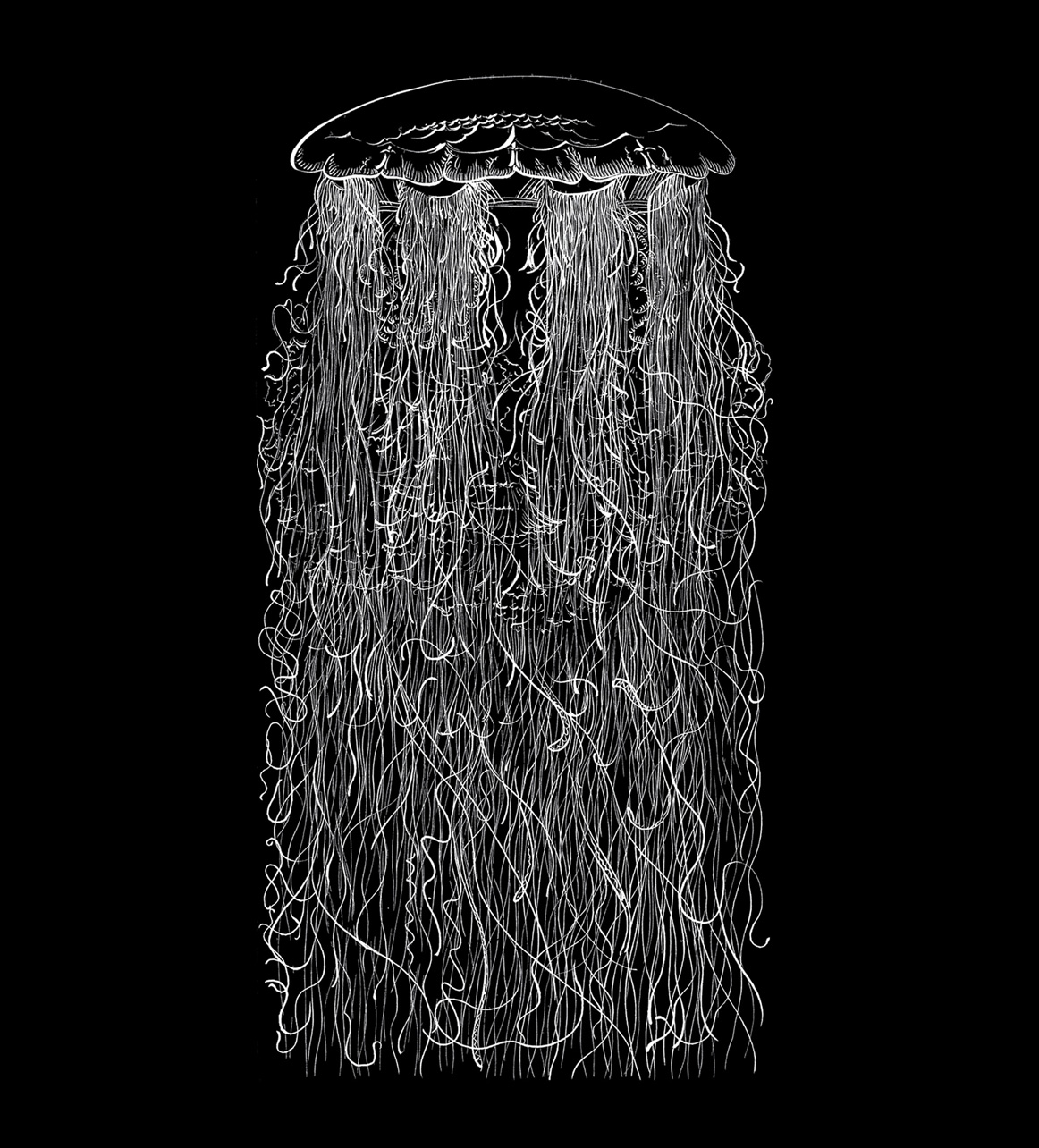Cyanea Arctica
Not unlike jelly
Louis Agassiz
The following description of a jellyfish by the Swiss-born Harvard University naturalist Louis Agassiz appeared in his 1862 book Contributions to the Natural History of the United States. Agassiz’s descriptive prose was admired by contemporaries such as David Thoreau and Waldo Emerson, but also later by modernists such Ezra Pound. A text by Richard Sieburth tracing the influences coursing through Agassiz’s text can be found here.
Seen floating in the water, [Cyanea arctica] exhibits a large circulate disk, of a substance not unlike jelly, thick in the centre, and suddenly thinning out towards the edge, which presents several indentations. The centre of that disk is of a dark purplish-brown color, while the edge is much lighter, almost white and transparent. This disk is constantly heaving and falling, at regular intervals; the margin is especially active, so much so, that, at times, it is stretched on a level with the whole surface of the disk, which, in such a condition, is almost flat, while, at other times, it is so fully arched that it assumes the appearance of a hemisphere. These motions recall so strongly those of an umbrella, alternately opened and shut, that writers, who have described similar animals, have generally called this gelatinous disk the umbrella. From the lower surface of this disk hang, conspicuously, three kinds of appendages. Near the margin there are eight bunches of long tentacles, moving in every direction, sometimes extending to an enormous length, sometimes shortened to a mere coil of entangled threads, constantly rising and falling, stretching now in one direction and then in another, but generally spreading slantingly in a direction opposite to that of the onward movement of hair, encircling organs which are farther inward upon the lower surface of the disk. Of these organs, there are also eight bunches, which alternate with the eight bunches of tentacles, but they are of two kinds; four are elegant sacks, adorned, as it were, with waving ruffles projecting in large clusters, which are alternately pressed forward and withdrawn, and might also be compared to bunches of grapes, by turns inflated and collapsed. These four bunches alternate with four masses of folds, hanging like rich curtains, loosely waving to and fro, and as they wave, extending downwards, or shortening rapidly, recalling, to those who have had an opportunity of witnessing the phenomenon, the play of the streamers of an aurora borealis. All these parts have their fixed position; they are held together by a sort of horizontal curtain, which is suspended from the lower surface of the gelatinous disk. The horizontal curtain is itself connected with the disk, fastened to it as it were by ornamental stitches, which divide the whole field into a number of areas, alternately larger and smaller, now concentric, now radiating, between which the organs already described are inserted.

Louis Agassiz (1807–1873) was a Swiss-born zoologist and geologist who relocated to the United States in 1846 and became one of the nation’s first great scientists. A longtime professor at Harvard University, he was also the founder and first director of its Museum of Comparative Zoology.
Spotted an error? Email us at corrections at cabinetmagazine dot org.
If you’ve enjoyed the free articles that we offer on our site, please consider subscribing to our nonprofit magazine. You get twelve online issues and unlimited access to all our archives.